Gallery Network
7 Questions for Photorealist Painter Robert Gniewek on Finding Inspiration in the Urban Landscape at Night
Louis K. Meisel Gallery will present the artist's recent work at Art Miami this week.
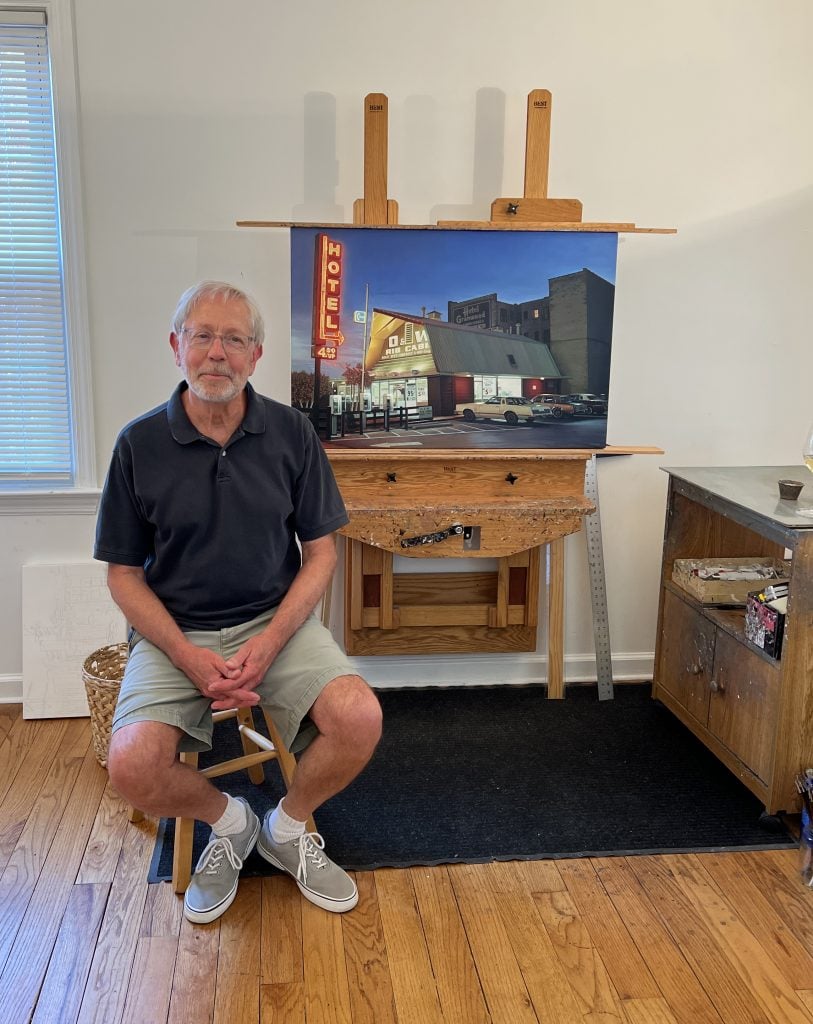
Louis K. Meisel Gallery will present the artist's recent work at Art Miami this week.

Artnet Gallery Network

American artist Robert Gniewek (b. 1951) is a master of contemporary photorealism and is best known for his atmospheric portrayals of urban landscapes. Originally from Detroit, Michigan, Gniewek has turned his artistic vision to cities across both the United States and Europe, maintaining a special focus on various qualities of artificial light, from the fluorescent glow of theater marquees to neon signs hanging in the windows of diners. Far from being simply documentary, however, Gniewek aggregates elements of various vignettes to create compositions that are purely of his own artistic vision.
This month, Louis K. Meisel Gallery will present a selection of Gniewek’s latest paintings at Art Miami in booth AM408. Ahead of the exhibition, we reached out to Gniewek to learn more about the development of his singular practice, and what goes into his technically meticulous paintings.
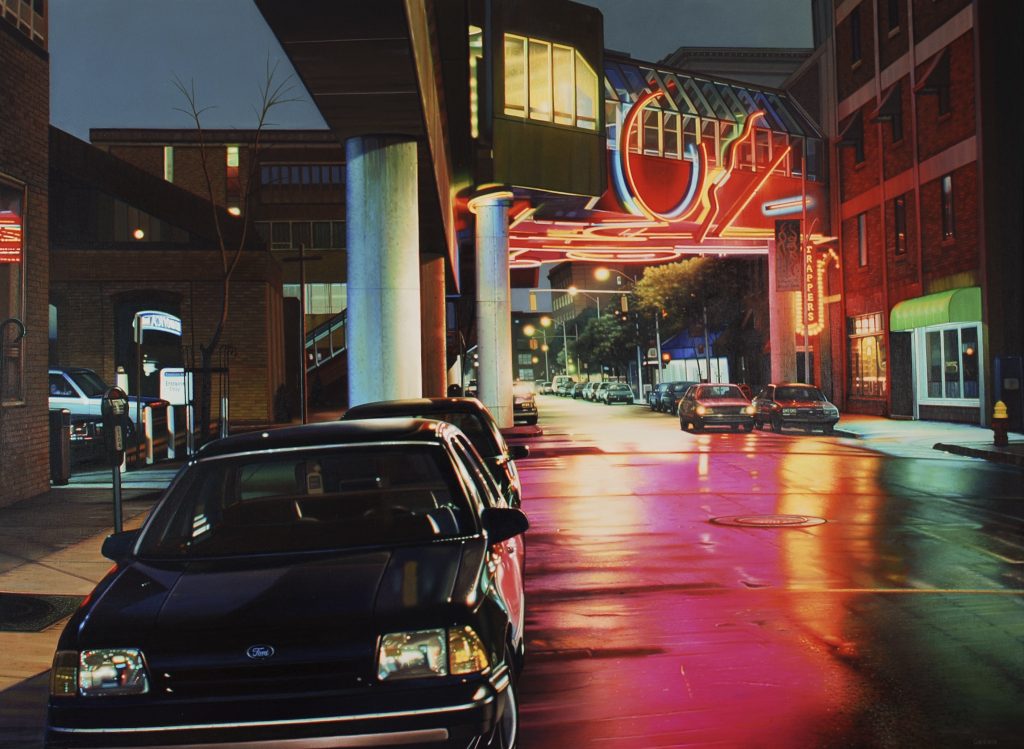
Robert Gniewek, Greektown, Beaubien Street (2020). Courtesy of Louis K. Meisel Gallery, New York.
Early in your career, what initially drew you to Photorealism?
In 1978, I was working on my master’s degree in painting at Wayne State University in Detroit. My work focused on realist urban landscapes that were done in a painterly style. I was aware of and admired the work of the photorealist painters of that era, having seen reproductions, but I had not had the opportunity to see them first hand at a gallery or museum. That September, the Toledo Museum of Art had a show of Richard Estes’s urban landscapes that I went to see twice. I was extremely impressed by the complexity of the compositions and the skill level of the brushwork. It set me on a path to find my own vision and technique within the photorealist genre.
From a technical standpoint what goes into each painting? Do you always work from photographs? How long do they take to complete?
The first step is finding a subject to photograph that appeals to me visually—one that has a unique sense of character. When I’ve chosen a specific image, I project it onto the canvas and sketch in the image. I usually use several photographs for my reference information. These photos have different exposures, color values, and densities; the finished painting is a composite of the reference photographs.
I generally work from top to bottom and left to right. I work each area of the painting to a nearly completed state. I then move on to the following area until the entire composition has been filled in. At that point, I go back to make adjustments and corrections throughout so that the painting works as a cohesive and complete piece. The amount of time involved in completing a painting varies by the size and complexity of the subject, but my works are typically completed within two to six months.

Robert Gniewek’s O.W. Rib cabin (2020) in the process of completion. Courtesy of Louis K. Meisel Gallery, New York.
Can you tell us about your creative process?
My work has focused on night landscapes illuminated by various forms of artificial light—incandescent, fluorescent, sodium vapor, and neon. I’m interested in how these varying light sources can change the look and feel of a place, creating a poetic landscape within the grit and grime of an urban setting. When creating the composition, I try to find a viewpoint of the subject that uses an unexpected angle to incorporate additional elements in the receding background.
Despite continuing to work within the realm of photorealism, has your technique or elements of your style evolved or changed over the years?
My style of painting has definitely evolved and grown over the course of my forty-five-year career. My early work from the late ’70s through the mid ’80s had a more basic approach and appearance. As I progressed in technique, I was willing to take on more complicated subjects and concentrate on greater detail and subtle gradations within the light and dark areas. After many years, my approach to the work has become more confident, accomplished, and sophisticated. In recent years, I have been working toward more a precise, hard-edged finish, and I’ve moved away from the soft-focus look that I had been using.
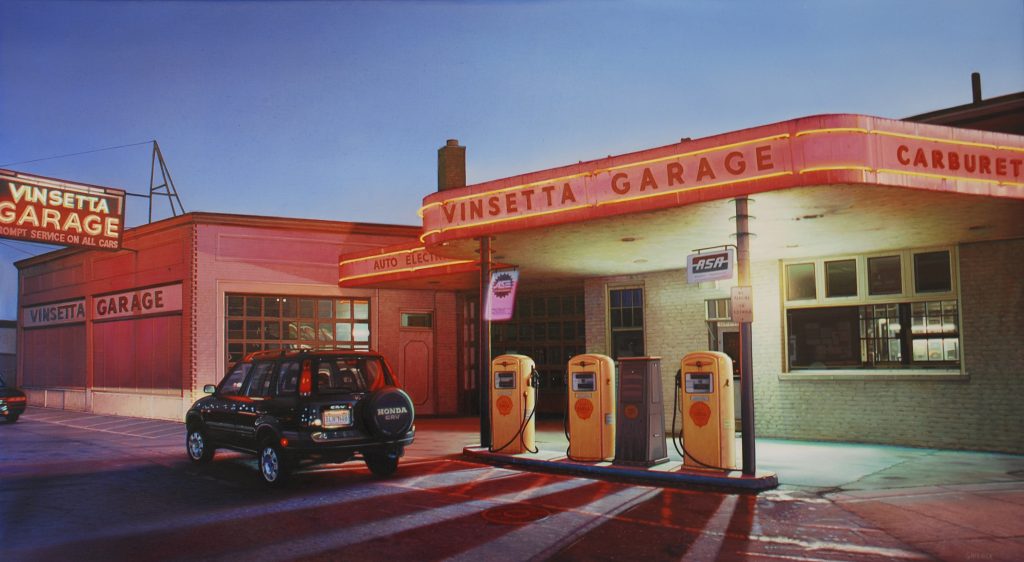
Robert Gniewek, Vinsetta Garage at Dusk (2020–21). Courtesy of Louis K. Meisel Gallery, New York.
Your body of work favors dusk or night scenes, as well as artificial light. What draws you to this type of atmosphere over daytime views?
I definitely draw my inspiration from the night urban landscape. Under the cover of darkness, city streets seem to come alive, bathed in the soft, neon glow of artificial lights, sometimes taking on an unnatural, almost other-worldly appearance. It is these types of places and settings that I seek out as my subject matter because they add a layer of mystery and intrigue to the pictorial narrative. My daylight landscapes of urban scenes are more focused on documenting specific times and places; these works often depict the contrast of harsh light and shadows on buildings and streets.
Many of your works focus on city or urban areas. Are these places you have a personal connection to?
Yes, it is the environment that I’ve always lived in and have an appreciation for. When I travel, it is to experience the specific culture of each urban environment and to document that place with photographs that might one day be the basis of a painting.
The two places that have been the primary focus throughout the years are New York and Detroit. My latest series of paintings deals with Detroit landscapes from a recent, but past era. The subjects are places that I have known and frequented. The paintings are based on photos I shot between the late 1970s and the early 2000s. This is my effort to document and preserve the gritty urban experience of the latter part of the 20th century.
This work will be exhibited in May 2024 at the Louis K Meisel Gallery in New York as part of a two-person show, alongside Randy Dudley.
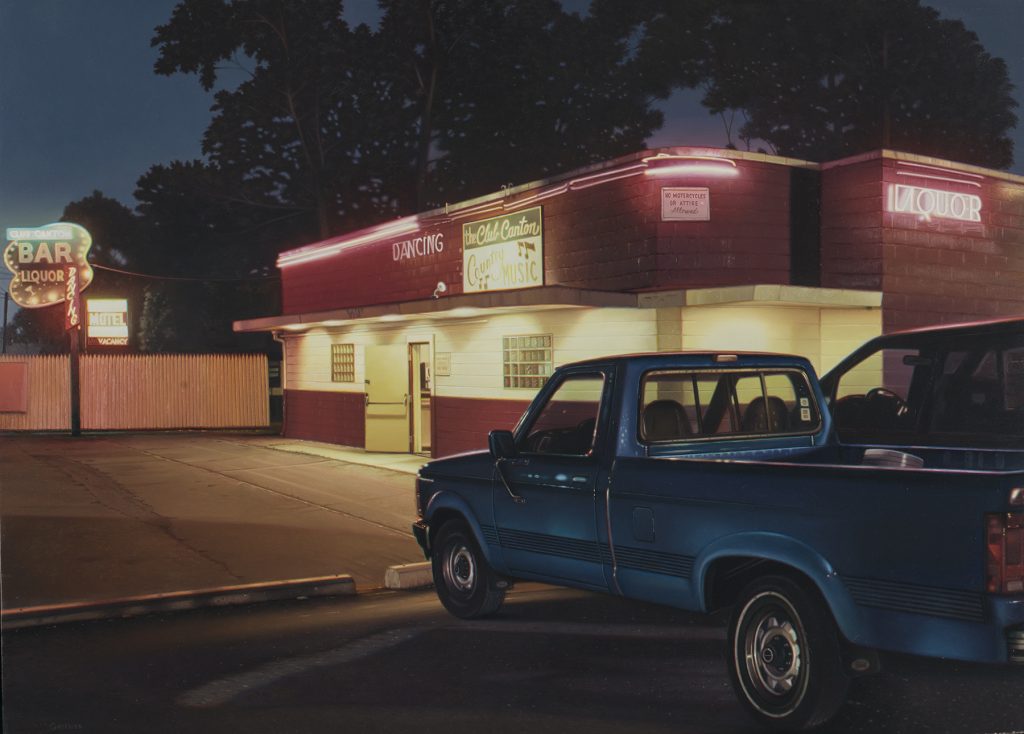
Robert Gniewek, Club Canton (2015). Courtesy of Louis K. Meisel Gallery, New York.
Have you been specifically inspired or influenced by other artists, either contemporary or historical?
Early in my career, Edward Hopper’s work had the most significant effect on me. The quiet sense of emotion and isolation in his urban settings was a guiding force. Later, I discovered Richard Estes, whose complex compositions and masterful technique has pushed me to become a better painter and pursue the photorealist style. From my contemporaries, the work of Davis Cone and Rod Penner stand out and inspire me to keep up the pursuit for the magic.
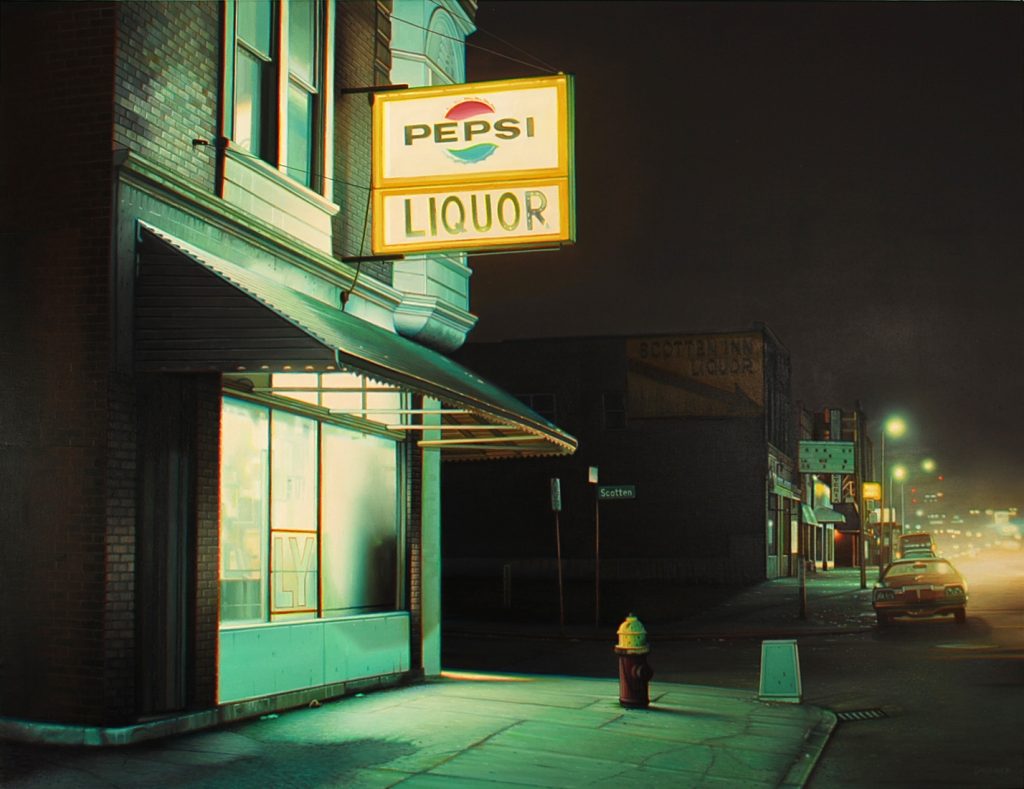
Robert Gniewek, Scotten Inn (2014). Courtesy of Louis K. Meisel Gallery, New York.
Learn more about Rober Gniewek with Louis K. Meisel Gallery, New York, here.
